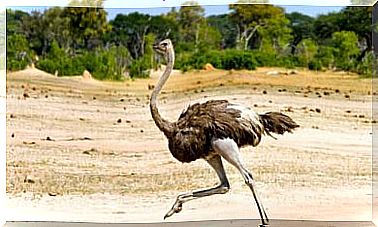The Vaquitas Recovery Plans Failed

The vaquita is a dolphin-like cetacean that lives in the Gulf of California (Mexico). It has been known for a long time that its population was declining, and 40 years ago plans to protect the species began. They did not bring the expected results and the vaquita is in critical danger of extinction.
Vaquitas characteristics
The vaquita is a marine mammal, a cetacean that lives only in the Gulf of California, Mexico. Specifically, it lives in shallower waters and rarely strays from the coast.
It is one of the smallest cetaceans in the world, whose specimens generally measure around 1.50 m in length and weigh up to 50 kilos. We can say that the biggest animals that inhabit our planet are cetaceans, such as blue whales. Therefore, it is surprising how small the vaquitas are, which in that sense look a lot like dolphins.
About its appearance, it must be said that its color is dark gray in the upper part of the body, and it gets lighter until reaching the white belly.
Furthermore, the fins are proportionately larger than the rest of the cetaceans, and their lips have a very characteristic shape.
As for their behavior, it is very difficult to see them in the natural environment: they only quickly rise to the surface to breathe and then go back to diving. As for food, vaquitas are predators: their diet is based on fish and shrimp, and they locate their prey thanks to its ecolocation system.
The history of the recovery of the vaquitas
40 years ago, it was first alerted about the danger that this species was running and the first plans for the recovery of the vaquitas began. However, it was during the 1990s that the species was declared in danger of extinction, and efforts were joined around the world to avoid the tragedy.
As they are shy and spend almost all their time underwater, it ends up being difficult to study this cetacean. The size of the population has always been estimated: in 1997, it was said that there were 560 vaquitas, while in 2000, it was believed that only between 100 and 300 individuals lived.
In an attempt to protect them, the Gulf of California was turned into a Biosphere Reserve. Afterwards, the place was called the Vaquita Refuge Area. Since 2013, many other actions have been taken to save it: changing the professions of fishermen that cause the death of many vaquitas, trying to encourage observational tourism, etc.
As early as 2017, a more desperate recovery plan was put in place, as it was said that only 30 were left alive. The idea was to capture all the vaquitas alive and protect them in captivity. So they would try to reproduce them, and when the population increased, they would be released. But that alternative also failed.
Failures of the vaquitas protection plan
Unfortunately, none of the plans worked. Local fishermen who changed jobs failed. Meanwhile, observational tourism has not been successful, with demand below expectations.
The point is that very little is known about the vaquitas. In fact, the level of docility of these animals was unknown, and whether they could bear to be in contact with humans. Putting the last plan into practice was a desperate move, one that had to be done almost blindly.
The first two that were rescued to be taken into captivity could not survive: the first was a cub, who would die without her mother’s care. The second died during the transfer and installation, believed to be due to the stress caused during capture.

Source: Paula Olson
Scientists have found no other solution to prevent its extinction. Many have already accepted that they will see the vaquitas disappear, as not enough is known about them to help them reproduce. Also, their habitat can no longer be protected.
Causes of extinction danger
As with all extinction cases, there are many causes that led to this problem:
The biggest cause of death for the vaquitas is that they get caught in illegal fishing nets to catch the totoaba fish. The capture of this fish is also illegal as it is in danger of extinction and is protected. But because it is very popular and expensive in parts of Asia, illegal fishing continues.
Other causes of the drop in the number of vaquitas can be found in the decrease in the quality of the food they eat: the damming of the Colorado River affected the quantity and quality of their prey.
Vaquitas do not live in social groups and want to be independent. This is why the fewer of them there are, the more difficult it will be to find them to make them reproduce. Furthermore, pregnancy in this species happens only once a year, and only one offspring is born at a time. Thus, its reproduction capacity is very small.
Eventually, some scientists gave up on plans to recover the vaquitas, and so we’re seeing the species disappear. Others still try, as a last ditch effort, to do something to help them, but it seems that soon the vaquitas will be another extinct breed.









